Analysing Data in Facility Management Real Time Poll Report
Facility management is ever-evolving, with big data emerging as a game-changing tool for optimizing operations, enhancing efficiency, and driving cost savings. Recent polls conducted among industry professionals at the DigiFM Conference in the Clean India Show 2024, shed light on the awareness, benefits, challenges, and potential of big data in facility management. Here is an in-depth analysis of the findings and their implications along with the expert opinion of Raghupathy Vaidyanathan, Associate Vice President-Global Workplace Solutions, HCL Tech; Rohit Arora, Chief Growth Officer-Support Services, Compass Group and Yogeshchandra Bhatt, Head Facility, Mumbai Metro One Pvt. Ltd.
What are the primary sources of big data in facility management?
Analysis
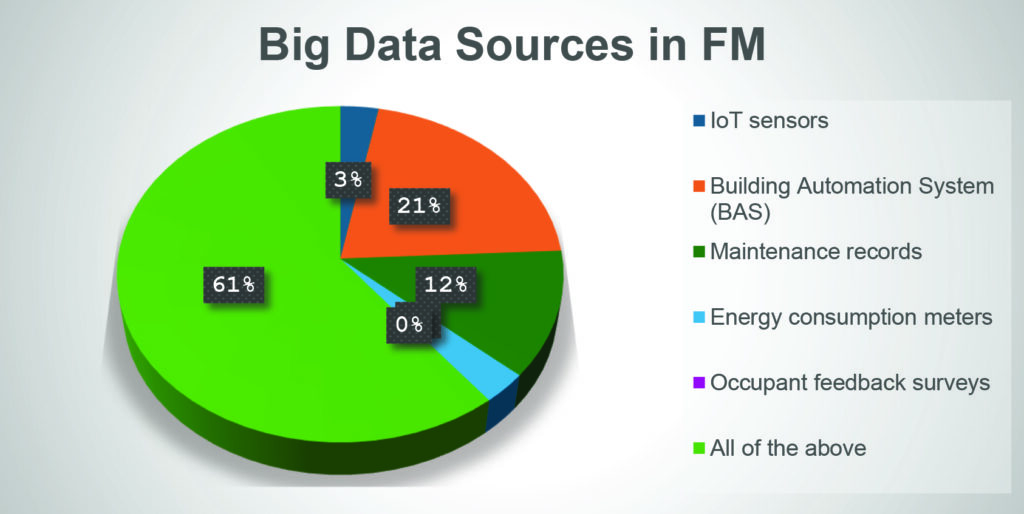
A majority (60.61%) of respondents recognized the importance of leveraging all available data sources — IoT sensors, Building Automation Systems (BAS), maintenance records, energy consumption meters, and occupant feedback surveys — highlighting the growing emphasis on integrated data-driven strategies in FM.
• Building Automation Systems (BAS) emerged as the second most significant standalone source, garnering 21.21% of votes. This underscores the reliance on BAS for centralized control and data collection in modern buildings.
• Maintenance records were the third most-cited source (12.12%), reflecting their importance in ensuring operational efficiency and predicting future needs.
• The IoT sensors and energy consumption meters each received only 3.03% of votes, while occupant feedback surveys were not selected at all. This suggests that stakeholders see limited value in isolating individual data streams compared to integrating them for holistic insights.
Experts
The poll results emphasize that facility management professionals increasingly favour integrated approaches to big data utilization. By combining multiple sources, FM can achieve a deeper understanding of building performance, operational efficiency, and user satisfaction, paving the way for smarter, more sustainable facility operations.
Data plays a critical role in optimising resource utilisation, especially when it comes to managing costs. Accurate data is essential for effective cost management; without it, inefficiencies can arise. Digitalising records is vital, particularly for compliance with ISO standards. It is also necessary to establish a centre of excellence within the facility management team, focusing solely on big data analytics to drive informed decision-making.
The first step in digital transformation is capturing data through digital tools like apps. As the process progresses, automation can be introduced with the use of IoT sensors. Moving from digitalisation to automation, the next step is integrating intelligence to interpret the collected data, allowing big data to bring all essential information together for smarter decisions.
Which of the following is NOT a benefit of using big data in FM?
Analysis

The majority of respondents (34.38%) correctly identified “increased maintenance costs” as NOT a benefit of big data. In fact, big data analytics reduces maintenance costs by
1. Predictive Maintenance: Identifying potential failures before they occur through analysis of equipment usage and sensor data
2. Optimized Schedules: Reducing unnecessary maintenance and extending equipment lifespan
3. Resource Allocation: Enhancing efficiency in labour and material usage
The high accuracy in this poll indicates a growing understanding of big data’s practical advantages in facility management.
How can big data help improve facility management decisions?
Analysis

A commanding majority (68.27%) recognized that big data enhances decision-making in all the listed ways, including:
• Predictive maintenance for cost savings and minimized downtime.
• Energy efficiency through data-driven optimization of HVAC and lighting.
• Space utilization analysis to maximize efficiency.
• Real-time monitoring to maintain safety and comfort.
Experts & Audience
1. Predictive maintenance influences energy efficiency and resource utilisation.
2. A holistic approach (“all of the above”) is vital for effective facility management decisions.
3. Big Data supports budget planning by forecasting capital expenditure (capex) requirements based on predictive analytics.
4. Big Data enables real-time decision-making by leveraging data from multiple sources to improve facility operations.
5. Predictive maintenance uses data patterns from sensors to pre-empt equipment failures, reducing downtime.
6. Transitioning from manual to digital data collection aids in optimising resource utilisation and identifying operational anomalies.
7. Predictive models streamline maintenance scheduling and resource allocation.
8. Predictive maintenance is fundamental as it encompasses other aspects like energy efficiency and space utilisation.
9. Comprehensive data analysis helps integrate activities like cleaning, energy efficiency, and space utilisation into predictive maintenance frameworks.
10. Space utilisation is subjective and context-dependent (e.g., hotels optimising laundry facilities).
11. Predictive maintenance acts as the foundation for planning energy efficiency, real-time monitoring, and other facility decisions.
12. Consensus: Predictive maintenance is the cornerstone of facility management improvements, influencing energy efficiency, space utilisation, and real-time monitoring.
What is the most important step in data analysis for FM?
Analysis
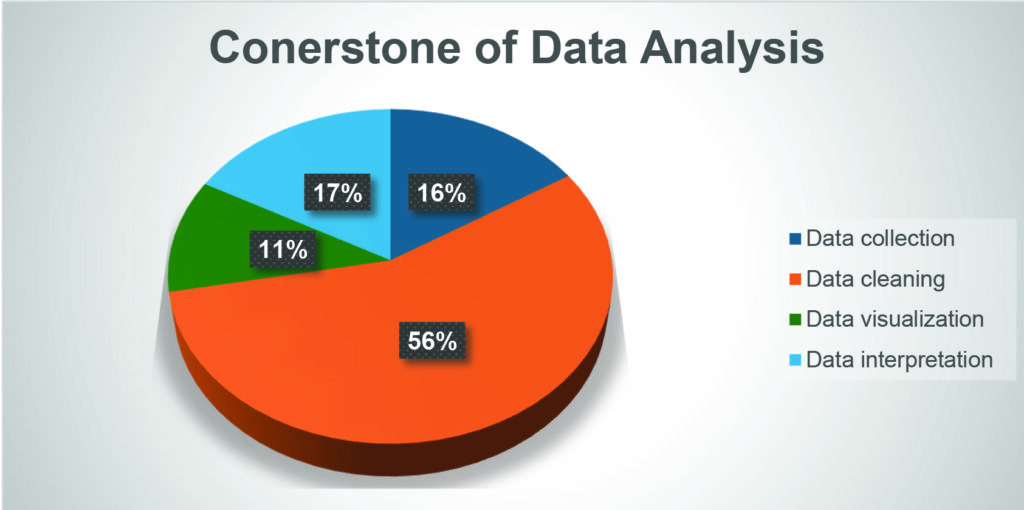
Over half the respondents (56%) identified data cleaning as the most critical step. This underscores its importance in ensuring data accuracy and reliability, which form the foundation for all subsequent analysis and decision-making.

Experts
Sensitive data related to day-to-day functions must be protected, emphasising the importance of securing it. The data analysis process for facility management begins with data collection. Accurate data capture is essential, as errors lead to incorrect outcomes.
The role of a data analyst is crucial, especially in interpreting the data. Data visualisation, such as dashboards or graphs, helps in presenting the data effectively, aiding in decision-making. Data cleaning, also known as data homogenisation or data massaging, is important, particularly when consolidating data from various sources. Proper data cleaning ensures consistency for analysis and representation.
The rise of regulations in the field highlights the increasing importance of adhering to data privacy standards and practices. Accurate data collection, cleaning, and visualisation are key in data analysis, while data security concerns — especially breaches and cyber-attacks — are critical in facility management today.
What are the biggest challenges in managing big data in facility management?
Analysis
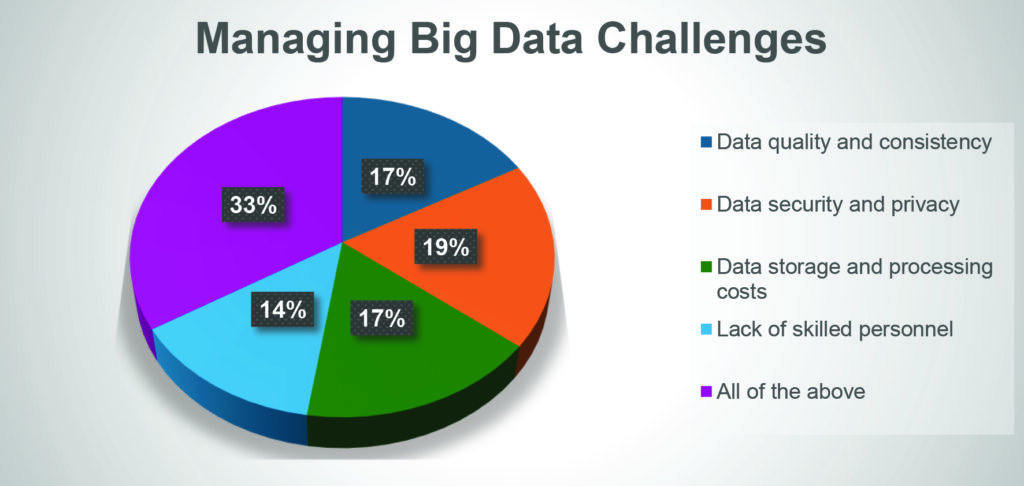
Nearly half (47.37%) of respondents acknowledged that managing big data involves multiple challenges, including quality, security, costs, and skill gaps. Effective solutions require addressing all these interconnected issues simultaneously.
Experts
Resistance to change, especially from higher management, is a significant barrier.
• Emphasising cost and complexity alongside the return on investment (ROI) can address these challenges.
• Cost concerns vary by industry, as facilities typically do not generate revenue directly.
• Industry-specific needs and ROI analysis should guide cost-related discussions.
• Cost is less of a challenge at the CXO level if a strong business case and ROI are presented.
• Resistance to change is a larger issue than cost, as decision-makers often prefer familiar processes.
• Demonstrating the benefits through proof-of-concept (POC) can help overcome resistance.
• Linking data analytics to ESG compliance and risk mitigation can strengthen business cases.
• Clients increasingly value tools that enhance sustainability reporting.
• Cost-related concerns often arise because decision-making on capital expenditure happens at higher levels.
• Demonstrating benefits directly to these decision-makers can mitigate cost objections.
• Clients often fail to see immediate value in digitisation and AI, leading to hesitance in adoption.
• The decision to invest depends heavily on the asset owner’s willingness to recognise the long-term benefits.
• Differentiating technology costs from regular operations in proposals is a challenge.
• Highlighting how technology contributes to smart facilities can encourage acceptance.
• Tech-savvy business leaders in new facilities are more receptive to smart solutions.
• Providing accurate data and numbers in proposals ensures better acceptance.
Consensus: The high accuracy in this poll indicates a growing understanding of big data’s practical advantages in facility management.
What is the primary benefit of using IoT devices in facility management?
Analysis
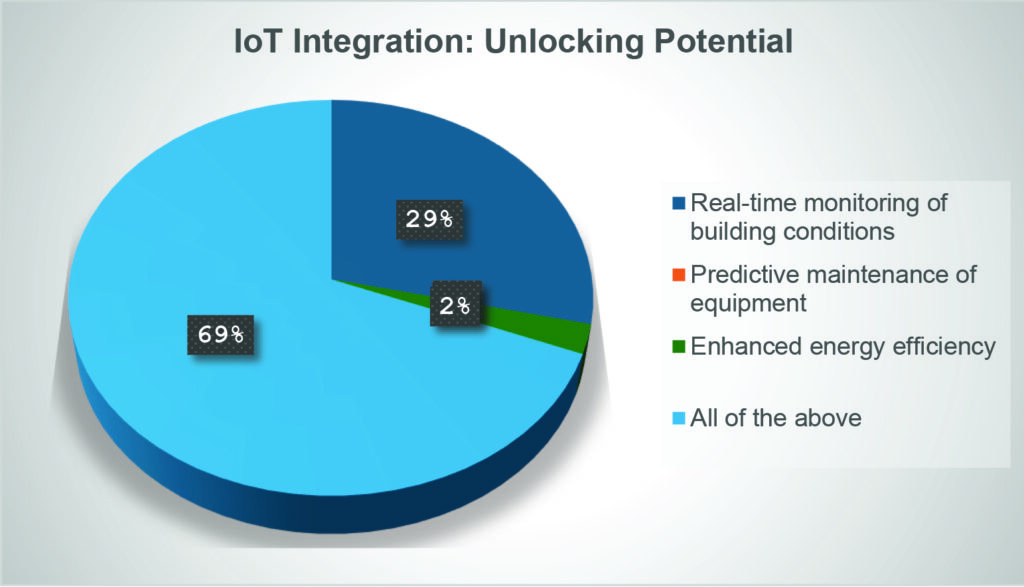
A large majority (68.97%) highlighted the comprehensive benefits of IoT, including
real-time monitoring, predictive maintenance, and energy efficiency, showcasing
its pivotal role in modern facility management.

Experts
- Advocates for using all data sources, especially IoT sensors, in facility management.
- IoT devices can be attached to various equipment (e.g., trash cans, soap dispensers, entry/exit points).
- Benefits include:
- Real-time monitoring for better operational oversight.
- Predictive maintenance to anticipate equipment failures, reducing costs.
- Energy efficiency through automation and usage pattern analysis (e.g., lights controlled by occupancy).
- Example: IoT implementation in a large IT organisation in South India significantly improved energy efficiency.
- Observes a contradiction in feedback on IoT benefits:
- Earlier emphasis on predictive maintenance shifted to real-time monitoring in later discussions.
- Highlights the need for clarity on IoT’s primary advantage in FM.
- The growing affordability and adoption of IoT solutions in facility management.
- Major challenge: Integration of IoT systems into a unified platform.
- Stress the importance of a single-pane dashboard for streamlined data access and executive decision-making.
How can AI and machine learning be used to improve facility management?
Analysis
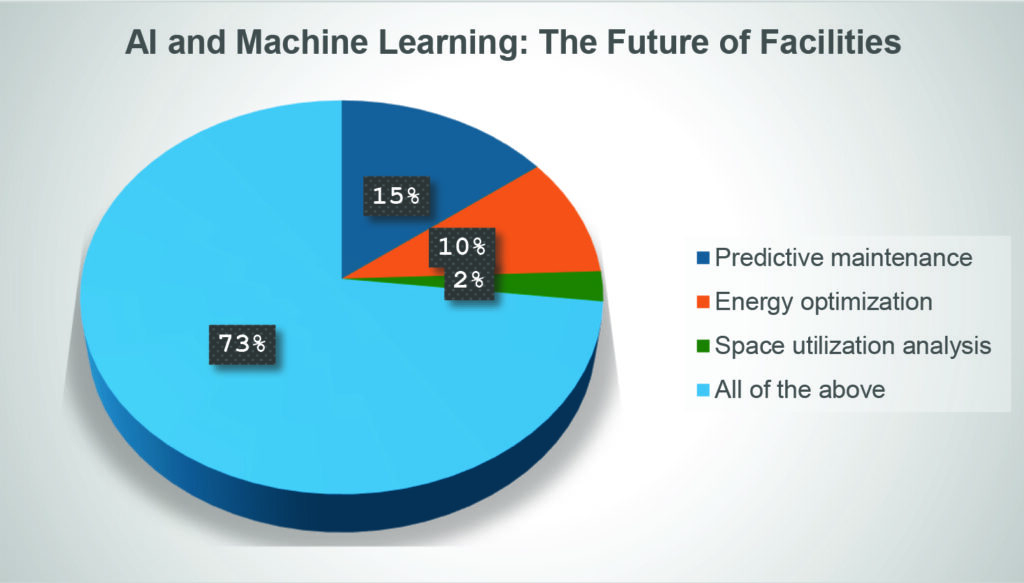
The overwhelming majority (73.17%) recognized the broad applicability of AI and ML, from predictive maintenance to energy optimization and space utilization, illustrating their transformative potential.

Experts
• AI is not yet widely adopted in most current FM systems.
• AI offers significant benefits, such as:
• Predictive maintenance for equipment upkeep and energy optimization.
• Energy optimization through improved machine efficiency.
• Space utilization with adaptable solutions based on use cases.
• AI can transform facility operations by shifting from reactive to proactive management.
• Proactive operations enabled by AI improve efficiency and operational effectiveness.
• AI and Big Data have a symbiotic relationship:
• AI relies on large datasets from Big Data for training.
• Big Data analytics often require AI tools for deeper insights.
• Predictive maintenance is a key application of AI and Big Data in FM.
What is the biggest challenge in implementing a big data solution in a large facility?
Analysis

A significant majority (62.2%) acknowledged the interconnected challenges of cost, complexity, and resistance to change, highlighting the need for strategic planning and effective change management in big data adoption.
Experts
• Manpower costs dominate FM budgets, influencing decisions on tech investments, with cost perception often leading clients to view advanced technologies as unnecessary expenses.
• Capex decisions are typically made at higher levels, limiting service provider access to advocate for advanced solutions. Pricing models based on headcount or SLAs hinder the adoption of efficiency-driven technologies.
• Demonstrating benefits at decision-making levels is critical to overcoming cost barriers and convincing asset owners to consider tech adoption separately from traditional costs. A strong business case with ROI can help overcome objections.
• Big Data adoption faces challenges, with resistance to change being a significant barrier rather than just cost concerns. Asset owners often fail to see immediate value in technological investments, complicating efforts to drive adoption.
• CXOs prioritize actionable data for strategic decision-making, and aligning with ESG goals while demonstrating ROI through Proof of Concept (POC) can be effective in driving adoption, especially for innovations like smart cleaning.
• Integrating data analytics with ESG and sustainability reporting, adds value and aligns with regulatory requirements, making a stronger case for technology adoption in FM.
• Cost concerns in facility management depend on whether facilities are seen as revenue generators or cost centres. Decisions are often influenced by management’s comfort with traditional methods, with resistance to change being a key obstacle.
• Cost and complexity of new technologies should be justified through clear value propositions and ROI, which can help overcome scepticism. Tailored approaches are needed as FM expenses vary across industries.
• Tech-savvy leaders in new-age businesses are more receptive to Big Data and analytics, and integrated smart technologies in new facilities help ease the adoption process. These trends are increasingly common in modern facilities.
 CIJConnect Bot-enabled WhatsApp
CIJConnect Bot-enabled WhatsApp









